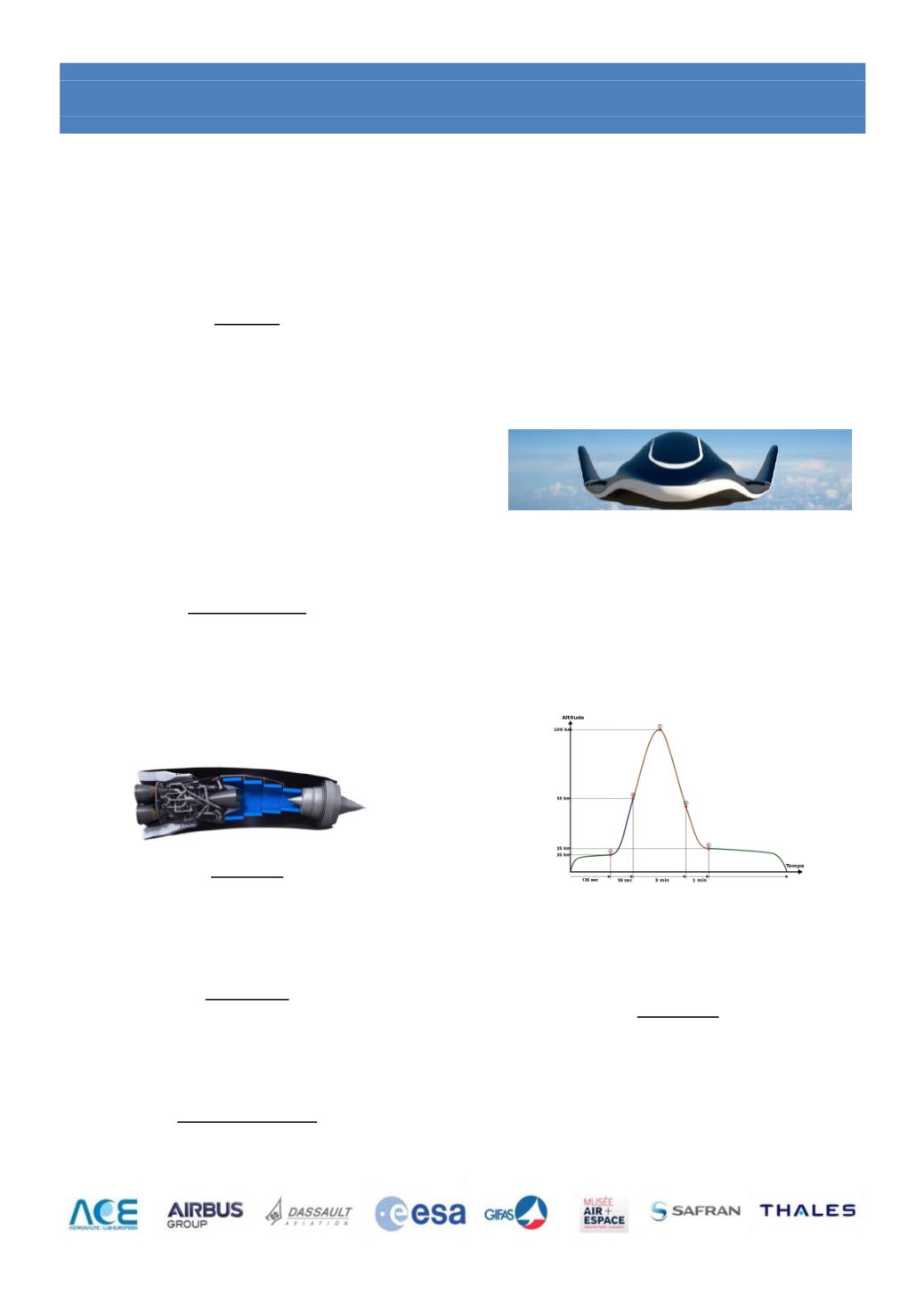

WP3 – MAIN PROPULSION
Student Aerospace Challenge 2015
(WP3 – Main Propulsion)
Alexis LEFEVRE - Antoine LEFEBVRE - Moutassem EL RAFEI - Laure DURAND -
Mohammed ALI SAAFI (avec la contribution de Thibault DE BRAS DE FER et Matthieu FLORIN)
ISAE-ENSMA - Chasseneuil-du-Poitou (Futuroscope)
The Idea
How could the space industry and tourism
develop itself, if the cost/kg it takes to reach space
is so high?
If we imagined space launch via suborbital flights
(interesting thanks to the reuse of the shuttles =
lowering the launch price and the passenger ticket
price), how come 5.4 tons over the 11.6 tons of
the vehicle are designed for propellants? Whereas
these propellants are mainly liquid oxygen, which
could be taken from the surrounding atmosphere,
during the major part of the flight!
The Technology
The hybrid engine called SABRE, for Synergistic
Air-Breathing Rocket Engine, developed by
Reaction Engine Ltd. recently proved to be able to
cool incoming atmospheric air to 120 °K in 20 ms,
before injection in the rocket engine, and is
progressing toward a full scale demonstrator.
The Issue
Having in mind the dimension of a suborbital
vehicle, would it be possible to use the SABRE
engine as primary propulsion? What kind of
design and flight path should we consider?
Constraints
Designing a vehicle for manned flight (+5.4 G
max, Mach 3.8), with existing technologies, while
ensuring the total reliability, and maximal
reusability in order to reduce maintenance costs.
Application to MSV
The SABRE engine was studied in order to be
scaled down for our manned suborbital vehicle
(MSV). It delivers a thrust of 150 kN, having an
ISP around 5189 s in air-breathing mode, and 441
s while working as a rocket engine. Trajectory was
optimized under constraints, for the SABRE, to
minimize the propellant consumption.
Distinct phases of the flight emerge: a climb to 20
km altitude followed by an acceleration to Mach
3.5 in air breathing mode. Then the rocket engine
takes over during 59 s, helped by significant
aerodynamic forces to rise the shuttle to 55 km
and start a parabolic flight in zero gravity of 3 min
11 s, for a total consumption of 2.4 tons of
propellants.
The aerodynamics, the combustion chamber, the
nozzle, the air inlets and the tanks have been
studied in order to meet the requirement of this
concept of suborbital vehicle.
Conclusion
A concept of MSV achievable within the next 10 to
15 years, provided funding, was established. The
propulsion efficiency of the SABRE engine,
applied to suborbital flights, enables to reach very
good performances, and paves the way for its
application to other areas such as transcontinental
and orbital flights.

















